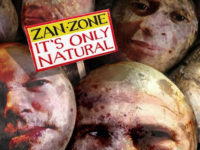Next time you’re shootin’ the breeze with a group of musically minded classic rock fans, try this: ask them to name the biggest English hard rock bands of the early 1970s. Chances are the first names that come to mind will likely include Led Zeppelin, Black Sabbath, Deep Purple and the Who. Eventually, Uriah Heep will be mentioned as well, but found a little further down the list.
This is somewhat interesting when one considers that, at the peak of their popularity, they were right in there with their more recognized rock ‘n’ roll brethren.
Most of those early godfathers of metal built their sound on similar elements: technically proficient instrumental chops, strong vocals, and obtuse lyrical content. Best of all, the music seemed to make more sense the louder it was played, both in concert and on your basic home stereo. Uriah Heep had, as well, the bonus ability to transform their gutsy hard rock delivery into something that almost crossed the borderline into early prog rock territory. (Having famed Yes album designer Roger Dean do a couple of Heep album covers didn’t hurt, either.)
They even had a trio of back-to-back-to-back releases destined to become classics of classic rock: Look at Yourself (1971), Demons and Wizards (1972), and The Magician’s Birthday (1972). However, after that brilliant run, they experienced progressively dwindling album sales impacted by multiple personnel changes, lack of musical direction and a general drop off in the quality of their material.
Eventually, Uriah Heep fell off the North American rock ‘n’ roll radar. Tracks like “The Wizard” and “Easy Livin’” still pop up on classic rock radio playlists, but otherwise the band is mostly a footnote in rock ‘n’ roll history, at least in the western hemisphere.
To this day, many people assume their story ended somewhere around the time of those last handful of singles, but in reality, the band never really broke up. In fact, they continued to release mostly decent but unremarkable albums with occasional flashes of greatness that generated little critical appeal or commercial success.
When they reached the bottom of their downward spiral, all that remained was founding guitarist Mick Box and the rights to the name. Instead of closing up shop, he chose to retool the band, hired some new members, and released the critically acclaimed Abominog in 1982. Still, the personnel continued to shift until 1986, when the lineup stabilized.
Guitarist Box and drummer Lee Kerslake from the band’s salad days were joined by veteran keyboardist Phil Lanzon, bassist Trevor Bolder, and vocalist Bernie Shaw, who defined the “journey” part of the term “journeyman” by working his way through bands starting from the city of Victoria on Canada’s west coast, through a few also-ran English up and comers, and finally getting the nod to be Uriah Heep’s frontman — and to this date the longest running at close to 30 years.
The only significant changes to the group were bringing in Russell Gilbrook to replace an ailing Lee Kerslake in 2007, and Davey Rimmer replacing Trevor Bolder, who died from pancreatic cancer in 2013.
From 1986 to 2007, that’s 21 years with the same line up, and without the health factor it would have probably gone on eight more years right up to the present. So, where have they been all this time? It turns out they have a strong fan base in Europe, where they have been drawing crowds to their live shows for decades. And even though their fans celebrate their history, Uriah Heep is not considered to be a nostalgia act.
True, they often release live concert albums that celebrate their more than 40 years of existence, but in that time they have continued to release studio albums of new material. In fact, there’s a strong argument to be made that their last three studio efforts, Wake the Sleeper (2008), Into the Wild (2011) and Outsider (2014) are the best albums of their long career. All three releases are mixed well, sound contemporary, and retain the band’s fundamental identity.
Some insist the classic Uriah Heep sound is that of massed vocal harmonies backing original singer David Byron’s near operatic tenor. But it’s probably more accurate to identify their sonic thumbprint as a combination of Mick Box’s distinctive guitar tone, effect-drenched and distorted Hammond organ, fluid bass lines and relentless drumming. It’s a potent mix that provides an electrified wall of sound as a backdrop to the vocals.
In the modern age, they’ve also gotten away from a lot of the easily dated sword and sorcery imagery, while maintaining in Bernie Shaw’s vocals the elements of power and melody that always marked their best work. Call their sound “classic gothic heavy metal prog pop hard rock” for lack of a better term, because it really does contain all those elements.
Recently, the band released Live at Koko, a CD/DVD which showcases the current lineup performing their newer material and their proven standards with equal enthusiasm. Shaw sings the ’70s repertoire like he’s been singing it for years (which he has), Box continues to bring his six-string guitar slinging skills to the party, and the rest of the band are as spot on as only musicians that maintain their tightness through constant touring can be.
In the end, to say that the history of Uriah Heep was all about easy livin’ until they fell down head first would probably be wrong. Despite their perceived outsider status, these travelers in time continue to grow and make progress in a career now well into four decades and counting.
- How David Bowie’s ‘The Next Day’ Stripped Away All of the Artifice - March 15, 2023
- Why Deep Purple’s ‘Who Do We Think We Are?’ Deserves Another Listen - January 11, 2023
- In Defense of the Often-Overlooked Mott the Hoople - November 10, 2022



